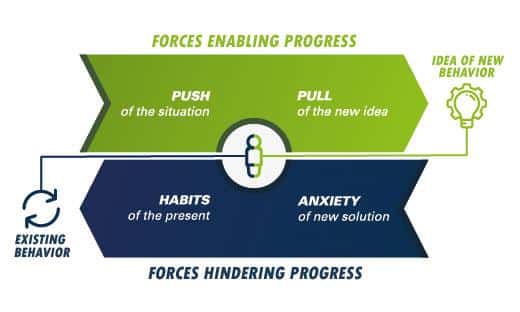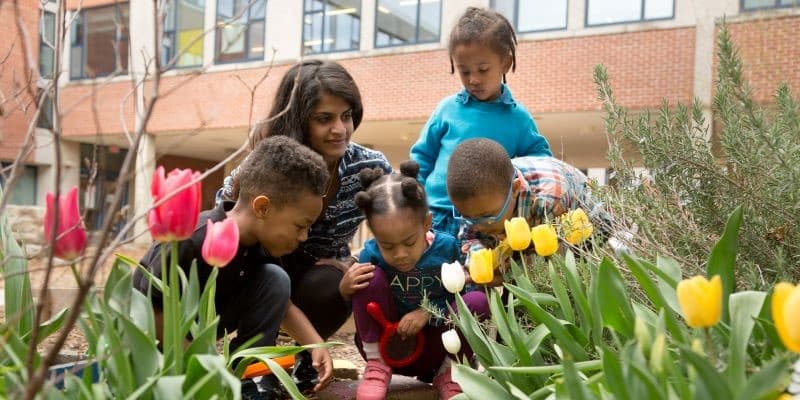In the summer and fall of 2020, as families wrestled with how they would manage remote learning, “learning pods” started trending. Initially, pods were just temporary stop-gaps to provide social interaction for kids and child care coverage for parents until schools could reopen. Yet this fall, with many schools back to in-person instruction, pods and their microschool cousins remain a point of public interest. Just within the last few weeks, The Atlantic, Forbes, and The 74 have all published articles about the continued traction of learning pods and microschools. Meanwhile, organizations such as the Center on Reinventing Public Education (CRPE) and Tyton Partners have dedicated time and resources to studying these novel educational options.
Overall, learning pods only currently serve about 3% of K–12 students, but could they become a lasting feature of the K–12 education landscape? Understanding what families want given their current circumstances could provide some clues. Fortunately, Jobs to Be Done Theory and some fairly recent research offer insights on this front.
What are families’ Jobs to Be Done?
In 2019, research for the National Association of Independent Schools (NAIS) identified four Jobs to Be Done that define the progress parents seek when they opt for private schooling. Two of the four Jobs to Be Done lead families to seek a premium version of schooling that can outperform local public schools on academic rigor and college placement—jobs which don’t seem relevant to pods and microschools. Meanwhile, the other two jobs aim for something different:
“Job 1: When a school is failing my child, either academically or by not providing a safe learning environment [e.g., due to unaddressed learning needs, bullying, or systemic oppression], help me find a school that will address those obstacles so I can ensure that my child will not fall further behind and will eventually thrive in school.”
“Job 3: When a school is focused almost solely on test scores and academic curriculum [or in today’s context, we could also add mask mandates and social distancing restrictions], help me find a school that will focus on my child’s social and emotional development, so I can be sure that my child will be a well-rounded and productive member of society.”
Note that these jobs don’t prioritize the dominant pressures that most K–12 public and private schools face: to increase students’ test scores, graduation rates, and college admissions in the long run while ensuring COVID-19 safety protocols in the short run. For families with these jobs, the basis of comparison shifts. They want their children to experience education that is qualitatively different from mainstream schooling.
But mainstream schools that fulfill these jobs may be hard to find. Most mainstream schools operate in value networks that systematically keep them from designing around these jobs. Thus, families with these jobs end up looking to the periphery of K–12 education for help.
How do these jobs relate to pods and micro-schools?
Jobs to Be Done don’t become active in a person’s life until dissatisfaction with present realities and the appeal of new alternatives overcome the habits and anxieties that hold people back (as illustrated in the diagram below). We have not conducted Jobs to Be Done research on why families pick pods and micro-schools, but as an experienced education researcher and father of younger children, my suspicion is that for some families, the pandemic shifted the circumstances of their lives in a way that activated Jobs to Be Done like those described above (Job 1 and Job 3). For families with these jobs that lacked access to private school options, pods and microschools (and perhaps virtual schools and homeschooling as well) seem to be where they turned.

Consider a hypothetical example: Parents of a certain family know their child often feels bored, confused, frustrated, or in the worst case, bullied at his current school. These experiences push the family toward Job 1 listed above. But if the family is uncertain about whether other schooling options in their area will provide what they want for their child, or if they can’t afford the available options and can’t manage homeschooling, these circumstances create anxieties that inhibit change. Meanwhile, the inertia of daily routines and the status quo bias keep the family tethered to their current school.
Then COVID-19 enters the scene, the balance of forces in the family’s life shift, and the catalysts for Job 1 become something the family can no longer ignore. With school buildings closed, the family’s day-to-day routines become untethered from the status quo. And when many school-aged children are missing out on peer interaction and struggling to remain engaged during emergency remote instruction, trying out new schooling alternatives doesn’t seem as risky.
In other words, a latent Job to Be Done that predated the pandemic suddenly became active because the pandemic disabled the forces that create resistance to change. Then, as families experienced the satisfaction of having their Jobs to Be Done fulfilled by pods and microschools, these newly activated jobs became the compelling reason to stick with new schooling alternatives.
We don’t have hard data yet to confirm my hypotheses, but reporting from The 74 seems to corroborate this analysis:
“While the pandemic provided the initial spark behind the growth of pods — and remains an important catalyst — parents say their reasons for joining have expanded as the concept has taken root. Those reasons are as varied as resistance to mask mandates, a desire for culturally relevant education and frustration with services their children were receiving in public schools.”
What’s the future of pods and microschools?
Pods and microschools may be serving a dormant Job to Be Done that COVID-19 activated for some families. Our recent survey data indicate that they don’t have much traction within public education, and unless states or school districts create funding streams for these options, their cost makes them either inaccessible or insufficiently appealing for many families. Yet given their low price point relative to conventional private schools, they could represent a small but noteworthy growth in the K–12 non-public school market. Additionally, if pods and microschools manage to persist and, therefore, evolve and improve in the years to come, there’s a chance that they could give conventional private schools a run for their money.
I’d love to hear your thoughts as well! Find me on Twitter @ArnettTom, send me an email, or reply in the comment section.
Photo by Allison Shelley for EDUimages.



